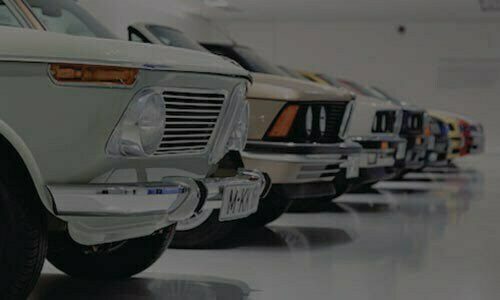Understanding Car Fluids: A Guide to Checking and Changing Them
Proper maintenance of your vehicle is essential for its smooth functioning and longevity.
Proper maintenance of your vehicle is essential for its smooth functioning and longevity. One crucial aspect of car maintenance is regularly checking and changing the various fluids that keep your vehicle running efficiently.
This article will provide an overview of the most important car fluids, how to check them, and when to change them.
- Engine Oil: Engine oil is arguably the most critical fluid in your car. It lubricates the engine’s moving parts, reduces friction, and helps dissipate heat. Regularly checking and changing your engine oil is vital for preventing wear and tear and ensuring your engine runs smoothly. For checking your car’s engine oil, first, park the car on a leveled surface and let the engine get cold. Find the dipstick, usually marked with a yellow or orange handle. After pulling it out, clean it with a cloth or paper towel, and put it back all the way in. Finally, remove the dipstick again to ensure that the oil level lies between minimum and maximum marks on it. The recommended time for changing engine oil is different for various cars and driving conditions. You should check the owner’s manual for your car to know the exact suggestions.
- Transmission Fluid: Transmission fluid is responsible for lubricating the gears and components within your car’s transmission system. It also helps to maintain the correct pressure needed for smooth gear shifts. Neglecting to check and change your transmission fluid can lead to poor performance and costly repairs. Therefore, it is essential to check the level of the fluid regularly and change it as recommended. To check your transmission fluid, locate the dipstick (similar to the engine oil dipstick) while the engine is running and warmed up. Wipe the dipstick clean, reinsert it, and then remove it again to observe the fluid level. The fluid should be within the designated marks on the dipstick and have a clear, reddish color. If the fluid is dark or has a burnt smell, it may be time for a change. The recommended interval for changing transmission fluid varies widely, ranging from 30,000 to 100,000 miles, depending on the make and model of your vehicle. Consult your owner’s manual for specific guidelines.
- Coolant: Coolant, also known as antifreeze, is crucial for regulating your engine’s temperature and preventing overheating. It circulates through the engine and radiator, absorbing heat and transferring it to the air. To check the amount of coolant in your vehicle, find the coolant reservoir (usually made of semi-transparent plastic) under the hood when the engine is cool. The level of fluid between the minimum and maximum marks on the reservoir indicates an appropriate level. If the level is too low, you can add a mixture of coolant and water (usually 50/50). The recommended frequency for replacing coolant generally varies between 30,000 to 60,000 miles, depending on your vehicle. Always refer to your owner’s manual for exact instructions.
- Brake Fluid: Brake fluid is a hydraulic fluid that transfers force from the brake pedal to the brake calipers, allowing your car to stop. Over time, brake fluid can absorb moisture, reducing its effectiveness and potentially leading to brake failure. To inspect your brake fluid, first find the brake fluid reservoir, which is typically near the rear of the engine compartment. Check that the fluid level falls between the minimum and maximum marks on the reservoir. If the level is low, fill it up with the type of brake fluid recommended in your owner’s manual. Refer to your owner’s manual for specific directions on when brake fluid should be changed, which is usually every two years or after driving 20,000 to 45,000 miles, depending on your vehicle and how it’s used.
- Power Steering Fluid: Power steering fluid helps to maintain the smooth operation of your car’s power steering system, making it easier to turn the steering wheel. In order to check your power steering fluid, look for the power steering fluid reservoir which is usually marked with a steering wheel symbol. There are two ways to check the fluid level – some cars have a dipstick attached to the reservoir cap, while others have markings on the side of the reservoir. Ensure that the fluid level is within the marked range. The time frame for replacing the power steering fluid depends on your vehicle, but most manufacturers recommend replacing it every 50,000 to 100,000 miles. You can find specific recommendations in your owner’s manual.
- Windshield Washer Fluid: While not critical for your car’s mechanical functioning, windshield washer fluid is essential for maintaining visibility and driving safety. To check your car’s windshield washer fluid, look for the blue or white plastic container that is the washer fluid reservoir. If you find out that the fluid level is not enough, then add more washer fluid or mix a bit of dish soap with water and pour it in there. There is no specific replacement schedule for windshield washer fluid; just refill it as needed.
Special Care Tips for Long Travel
Embarking on a long journey can be an exciting and memorable experience, but it also requires careful planning and preparation to ensure a safe and enjoyable trip. Your vehicle plays a crucial role in your travel adventures, and taking the time to perform essential maintenance checks and preparations can make all the difference between a smooth drive and an unexpected breakdown. In addition to checking and changing your car’s fluids, there are several other aspects to consider before hitting the open road. Furthermore, being prepared for any eventuality is key; having the contact information of reliable car towing services on hand can provide peace of mind and quick assistance in case of an emergency. Let’s explore some essential tips and recommendations to help you get your vehicle road trip-ready and set the stage for an unforgettable journey. Here are some special care tips for long-distance travel.
- Check Your Tires: Inspect your tires for signs of wear or damage, such as cracks, bulges, or uneven tread wear. Make sure they have the proper air pressure (refer to your owner’s manual or the label inside the driver’s door for the recommended pressure). Don’t forget to check your spare tire as well and ensure you have all the necessary tools for changing a flat tire.
- Inspect Belts and Hoses: Examine the belts and hoses under the hood for signs of wear, such as cracks, fraying, or leaks. Damaged belts and hoses can lead to engine overheating or other serious issues, so it’s best to replace them before embarking on a long trip.
- Test Your Battery: Check your battery for any signs of corrosion or lose connections, and clean the terminals if needed. If your battery is more than three years old, consider having it tested by a professional to ensure it has enough charge for the journey.
Replace Wiper Blades: Make sure your wiper blades are in good condition and functioning properly. If they’re leaving streaks or making noise, it’s time to replace them. Clear visibility is crucial for safe driving, especially in unpredictable weather conditions during long trips. - Pack an Emergency Kit: Prepare an emergency kit for your vehicle that includes items such as a flashlight, jumper cables, a first-aid kit, non-perishable food, water, and blankets. Having these essentials on hand can provide peace of mind and help you handle unexpected situations during your journey.
- Plan Your Route: Before setting off on your long trip, plan your route and familiarize yourself with the roads and potential rest stops. Make sure to schedule regular breaks for stretching, hydrating, and resting to prevent fatigue and maintain alertness behind the wheel.
- Enjoy your Trip: To fully enjoy your trip, it is crucial to plan ahead and have a clear idea of the places you want to visit. If you are traveling in a group with multiple cars and companions, it is even more important to have a well-organized plan in place. Consider renting accommodation, arranging a fun BBQ party with games and refreshments, and even inflatables for children. For example, if you are traveling to Texas, then the bounce house rentals Corsicana offer great quality and affordable prices for a safe, entertaining experience. Be sure to take in the stunning scenery and make time for yourself to unwind. Enjoy your trip!
By taking these special care tips into consideration and ensuring your car is well-maintained, you can enjoy a safe and smooth long-distance journey. Proper preparation and maintenance not only enhance your driving experience but also help prevent unexpected breakdowns and costly repairs along the way.
Regularly checking and changing your car’s fluids is an essential aspect of vehicle maintenance. By keeping these fluids clean and at the proper levels, you can prevent costly repairs, extend the life of your car, and ensure a safer and smoother driving experience. Always consult your owner’s manual for specific recommendations and guidelines for your vehicle.

MORE VEHICLES
GAUK has developed powerful aggregation software that is monitored by real, live humans and only sources clean data.
AUCTIONS
Search ALL vehicles coming up for auction at the country’s leading sale rooms.
CLASSIFIEDS
Each day we gather up-to-the-minute information from multiple car classifieds websites across the internet
DEALERS
Search, save and compare car dealer vehicles across the entire UK.
“The GAUK Motors app has been a gift. I used to waste hours a day searching different sites and monitoring emails. Now I just set up a search and I’m done”


Joel Marchant
“I used the free service for a while and it wasn’t until I upgraded that I realised just what a fantastic app you’ve built. I’m a customer for life.”
“Hey GAUK. Awesome app. I use it on a daily basis and just bought my first classic car … an EType Jag of all things”
“I never usually write reviews but after watching GAUK grow I just wanted to say well done and keep up the great work”


Jane Cavanah
“There a lot os sites out there promising great things. It was so refreshing to find that you guys actually delivered on all that marketing hype. Cool!”
“The GAUK Motors Newsletter is the only one I look forward to seeing drop into my inbox”
What they’re saying
The Best Experience
GAUK has consistently delivered quality information. Thousands of vehicles from hundreds of websites making your perfect ride … easier to find.




